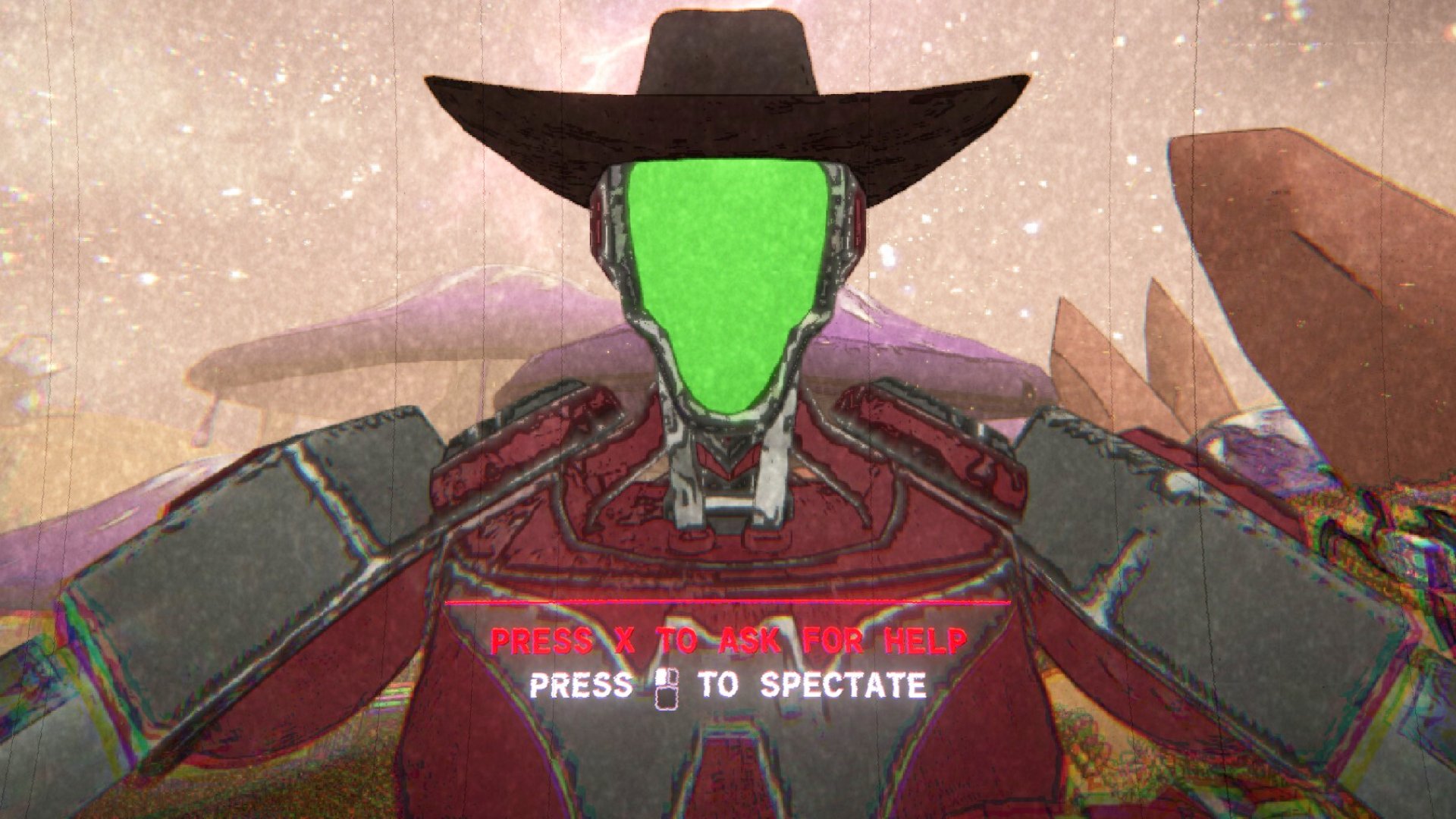Before Doom, before Wolfenstein 3D, why does nobody remember one of the first first-person shooters?
We're rerunning Richard Cobbett's classic Crapshoot column, in which he rolled the dice and took a chance on obscure games—both good and bad.
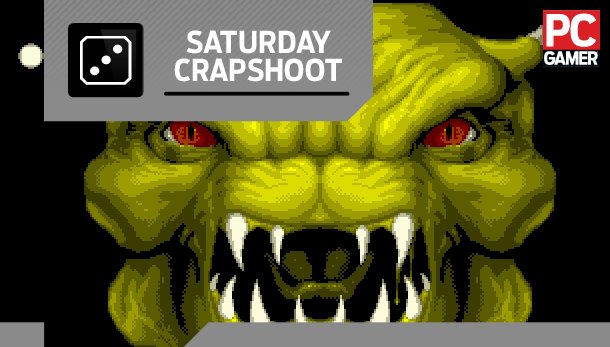
From 2010 to 2014 Richard Cobbett wrote Crapshoot, a column about rolling the dice to bring random games back into the light. This week, a look back to one of the forgotten games that preceded Doom.
Very few genres start with their most famous game. In the case of shooters, Doom set the template that everyone would try to build on as far as style, design, deathmatching, and feel, but it wasn't even close to being the first FPS. Nor was its predecessor, Wolfenstein 3D.
Even without looking at other companies, id Software had two before either of them—fantasy-themed Wolf 3D predecessor Catacomb 3D (not the "Catacomb Abyss" series that used the same engine but was made elsewhere, as well as featuring the most eye-gouging wall textures ever inflicted on an unsuspecting world), and the super-miminalist Hovertank 3D back in 1991, which had simple coloured boxes for levels and turned heads less for its complexity as its speed—something that Wolfenstein 3D would later weaponise.
But before that? Let's check in with Core Design. Years before striking gold with Lara Croft, in 1990 Core Design release Corporation, known as Cyber-Cop in the US. Corporation is one of those games that are hard to look back on, and easy to romanticise. At the time, the simple idea of a 3D world was mind-blowing, and these screenshots were like staring into The Future. There are reasons it's not that fondly remembered by those who played it though, with the number one being that, well, unfortunately they played it. And that was very much where Corporation collapsed into a pile of failure. It's simply not a fun game. At all. And secretly, it was no fun when it came out either.
But a game doesn't have to be fun to be interesting, and interesting Corporation absolutely was. Right from the start, with character creation.
As with a lot of pioneers, Corporation dramatically over-reached. It didn't want to be a mere shooter, but a complete RPG experience that in retrospect would have paved the way for games like System Shock if it had been done better. There are multiple characters, each with a line-up of skills ranging from Combat to Electronical, with two guys, two girls, and two androgynous robots to choose from as starting characters—and in a little detail I only just noticed, one of the human characters was black at a time when nobody was giving a thought to diversity. So, definite bonus point there.
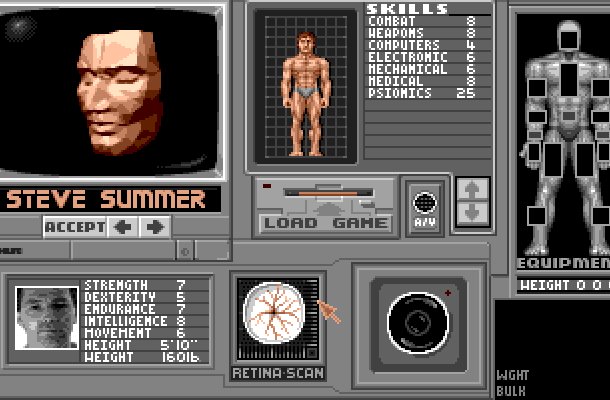
The women are also as strong as the guys, and only a notch underneath the 300lb Core Droids. Does that mean they're incredibly tough, or they're not exactly badass? Leave that one to the Let's Players to find out. Needless to say, the big balancing factor was that, while physically weaker, the humans got access to psionics and easier patch-ups in the field with their medical skills. Semi-related, anyone else miss when psionics were simply assumed to be a thing that was coming in, and thrown into science fiction purely for the hell of it?
Keep up to date with the most important stories and the best deals, as picked by the PC Gamer team.
There was another cool feature here. If you bought Corporation, you could send in a photo of yourself and receive a disk back that would let you appear in the game as yourself—stats, little picture and so on, though presumably not your actual retina scan. I never actually got to see this in action, so I'm a little curious how the 3D face that spins around in the top level was handled—whether they used a generic mesh or did something complicated to actually recreate your face in basic 3D.
Having chosen a character, it was then off to the shop to pick up some toys. Every character had a stack of cash to spend on whatever, including four grades of armour, five types of pistol, grenades, power packs, a jetpack (a little excessive for a game set entirely inside, but there you go), and a refreshing drink, because being a cop of the future is thirsty, thirsty work. Sadly, no donuts were available.
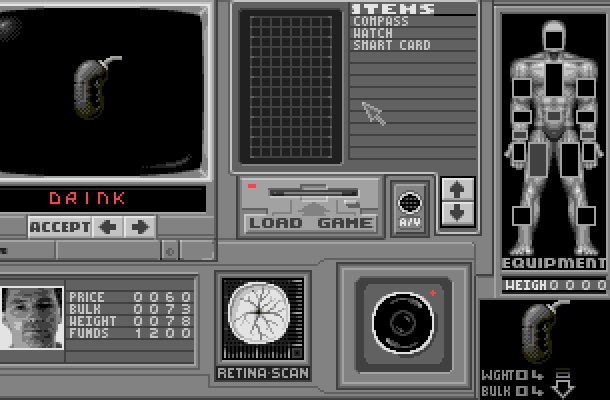
The plot, such as it is, is that we're in one of those cyberpunk futures where corporations like the titular Corporation (whose name is actually UCC) get to do whatever the hell they want as long as they do it in big rooms with light streaming in through the fans and take at least half an hour out of their day to be openly, maliciously evil.
In this case, UCC is in not-trouble thanks to a rampaging green monster called "Freddie" that has been killing people around their offices, and questions have as such started to be asked. Which, Corporation being That Kind of science fiction, goes something like this:
POLICE: You're genetically engineering monsters, aren't you?
CORPORATION: I know you are, but what am I?
POLICE: No, seriously, stop it, that's a totally douchey thing to do.
CORPORATION: Do you have any evidence of this accusation?
POLICE: You mean besides the genetic freaks walking around your office building?
CORPORATION: Right.
POLICE: Well... nothing concrete. Can we get a subpoena or something to look round?
CORPORATION: You may be surprised to learn that the answer is 'no'.
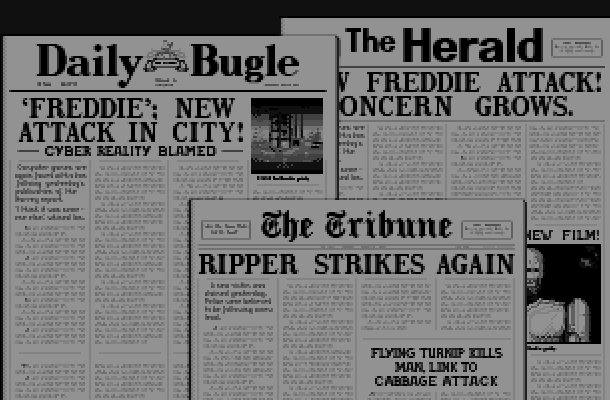
And that about concludes "due process" in the dark cyberpunk future. Luckily, there's always the classic "send a single person into mortal danger and hope they can sort it out" approach to police work, and I'm almost positive the fact that your ID card has "DEMENTIA" written on it is no indicator this idea is doomed to the bitterest of failure. Oh. Sorry. Spoiler warning.
Like many games of the time, Corporation is brutally hard and incredibly vague about everything. As a basic example, one of the starting bits of gear you can buy is a bomb, without any real idea of where it's meant to be used. The answer is that it's possible to be caught and thrown into the building's prison (and the fact it has one should honestly have been a bit of a heads-up to the town planning department), then use it to escape. Without a bomb, it's game over. With most of the kit there's simply no way of knowing what will be useful or not, even if you have the original game manual.
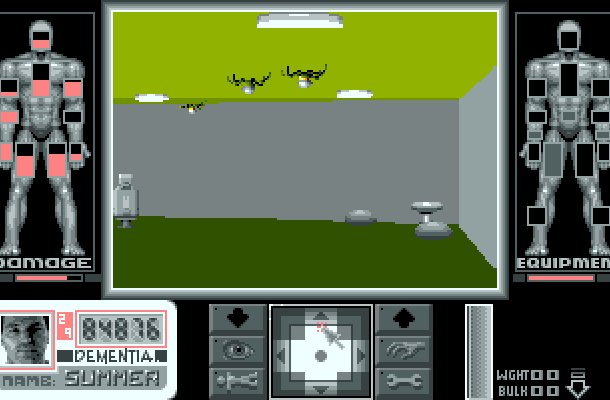
But even before you get to that point, good luck with the controls! It's often surprising how long it took for seemingly simple things like controls to be developed—the idea of walking forward, backwards, and strafing left and right still having yet to be invented. Instead, Corporation offers an interface more like a trackpad that you can drag a dot around to keep moving in a particular direction, as well as look up and down despite the fact the pre-Wolfenstein level design has absolutely nothing worth looking at on the ceiling. (Though to give it credit, it did have ceiling and distance shading.)
The map is not exactly thrilling, being somewhat reminiscent of the office in Die Hard, only without the detail. Empty corridors, empty rooms, lots of empty space, occasionally a box of toys in the corner to plunder for additional energy drinks and the hope of a "You Don't Have To Be Self-Destructively Evil To Work Here, But It Aargh No, Not The Face" coffee mug. There's never the slightest hint any humans work for the Corporation, just green reptile monsters and crustaceans standing around and begging a lot of questions. For instance, is this guy a weapon of war conceived by a crazed mind meddling in domains man was never meant to touch, or just the HR rep on his way to the canteen?

And these security droids... are you just interrupting their watercooler chat?

These are questions our illustrious cyber-cop never feels the need to ask. Though in fairness, the enemy response to an intruder isn't too subtle. There are no polite security guards or pointed comments on the lines of "Excuse me, but are you supposed to be here? In this top secret facility? Wearing a robot exoskeleton? Drinking juice?"
Everyone just shoots first, with gusto, and does an amazing amount of damage—especially if you've accidentally forgotten to arm the gun and are fighting back by flailing a fist wildly against a giant crab monster who is all, "Dude. Giant crab monster. Don't waste my time."
I certainly won't say it's impossible to beat, but it is notable that if you look for hints online now, the best you're likely to find is a Getting Started guide for the Amiga version that should already be putting the fear into any sensible gamer. For instance: "There's the biggest robot you've ever seen in your life, with the biggest missiles in the world." On the first level? Gulp.
Really, in most cases Corporation is less a game to win, and more a chance to see this screen a lot:
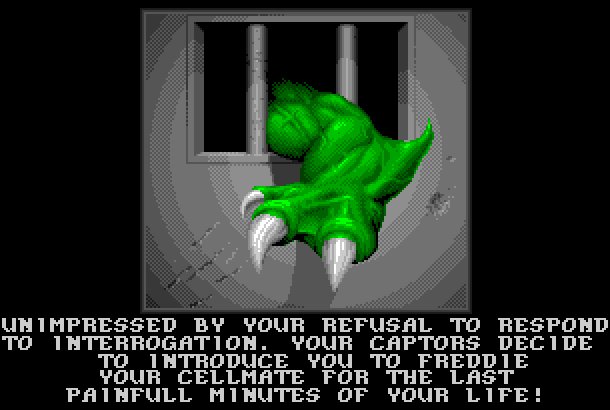
Again though, questions. Interrogation? What could they possibly want to know? Then, if he's contained in the building and under control like this, how is he rampaging around and... oh, never mind.
You might as well ask why in blazes Core decided that the main character should be able to take a break from the investigation to find a quiet corner and go to sleep. Or why the Corporation randomly scatters holograms of monsters around the map, where they serve no purpose but to act as security for people who shouldn't know about the monsters at all! Nobody seems to care about the droids! Use the droids!
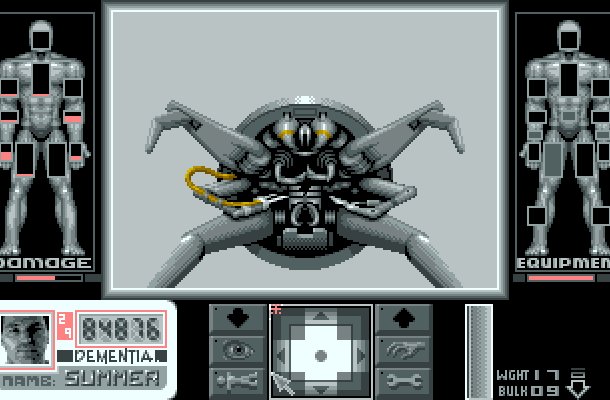
For a game this early in the genre's development to be offering locational damage, an inventory, and RPG systems like hacking into computers to switch off alarms, nobody could possibly say that Corporation wasn't ambitious or worthy of praise, even if it was definitely one of those games better left in the magazine pages than a disk drive. But it does raise the question: if you slogged through the whole thing, if you worked out all its systems, if you finally made it to the bottom of the Corporation's tower, what awaited?
"Congratulations! The successful completion of your mission earns you a considerable bonus and a weekend off."
Tssk. And you even had to pay for your own juice. May as well just have let the Corporation have its fun.

